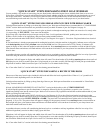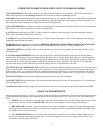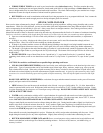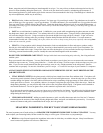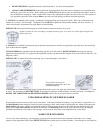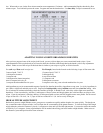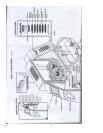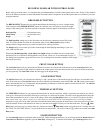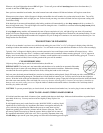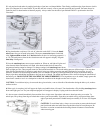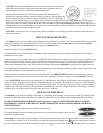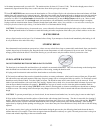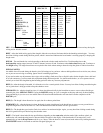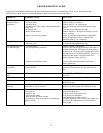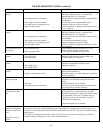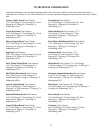
10
When on, red signal light under the word ON will glow. To turn off, press and hold start/stop button down for about three (3)
seconds or until the red ON light goes out.
Once you have started the bread maker, the colon between hours and minutes will flash and minutes will begin to count down.
When process time elapses, 0:00 will appear in display and audible alert will sound to let you know the bread is done. Turn off by
pressing start/stop button until red light goes out. Remove bread pan using oven mitts and shake loaf out of pan onto cooling rack.
Cool before slicing.
If the bread pan is not removed immediately after baking, machine will automatically go into keep warm mode for up to three (3)
hours to keep bread warm. The red ON light will remain lit during this time. If machine is not turned off during keep warm period,
machine will automatically turn off.
If using dough setting, machine will automatically turn off upon completion of cycle, red light will go out, alert will sound and
display will reset to dough setting. Remove the pan containing the dough and shape/form as desired for conventional baking. Do not
leave pan containing dough inside machine after completion of cycle as dough will continue to rise and could overflow the pan. See
Dough section for more details.
TOO HOT/TOO COLD WARNING
If inside of oven chamber is too hot or too cold for bread making, the word “Hot” or “Col” will appear in display along with alert
sounding to indicate that machine cannot be turned on. You will need to remove pan and allow chamber to cool or warm accordingly.
Typically “Hot” will appear in display when you make consecutive loaves and forget to turn machine off between loaves. Allow
chamber to cool with door open 10 to 15 minutes or until machine can be turned on without warning going off. If “Col” appears in
display, move bread maker to a warmer area for 15 minutes or until machine can be turned on without warning going off. If oven is
too hot, the yeast can be killed; if too cold, the growth of the yeast will be retarded.
CLEAN BEFORE USING
Lift pan up along front edge to unlock from bread maker, then lift out.
SPECIAL NOTE: The bread pan is not immersible and should never be washed in an automatic dishwasher.
Immersing the pan in water can cause damage to the bearings that turns the knead bars. Dishwasher cleaning
can reduce the non-stick qualities of the non-stick finish, causing the bread to stick in the pan.
Only two parts, the bread pan and knead bars, need to be cleaned before making bread. Simply fill bread pan with a small amount of
warm water and dishwashing detergent. The knead bars lift off shafts in bottom of pan. You may need to twist the bars slightly to
remove. Wash the inside of the pan and knead bar with a soft dishcloth or sponge. Empty the bread pan and rinse the inside and knead
bars with warm water and dry with a soft cloth. Do not use any abrasive scouring pads or cleansers on bread pan or knead bar as
damage to the non-stick coating can occur. Wipe the inside of chamber and outside surfaces of machine with a soft damp cloth if
necessary, dry with a soft cloth.
CAUTION: To prevent personal injury or electric shock, do not immerse bread maker base, its cord or plug in water or other liquid.
HOW TO USE—BASIC STEPS IN MAKING BREAD
1. Position knead bars onto shafts in bottom of pan, matching hub shape to shaft shape. Make sure both knead bars are pushed down
onto shafts all the way. You may need to twist bars slightly to drop in place. See
Diagram 8.
2. Add ingredients to pan in order listed in recipe, MAKING SURE, to add any liquid
ingredients first, followed by dry ingredients, then butter or margarine and lastly the
yeast. After the dry ingredients are added to the pan, tap to settle, then level dry
ingredients, pushing some of the dry mixture into the corners of the pan. This will
prevent any liquid from seeping up from the corners. Make a slight well in center of
dry ingredients and add the yeast to the well. This is especially important when using
the time delay to prevent the yeast from getting wet before the bread making process begins.



